Discover 11 hidden attractions, cool sights, and unusual things to do in Fuzhou (China). Don't miss out on these must-see attractions: Fujian Museum, Flower Lane Church, and Sanfang Qixiang. Also, be sure to include Fuzhou Confucian Temple in your itinerary.
Below, you can find the list of the most amazing places you should visit in Fuzhou (Fujian).
Table of Contents
Fujian Museum
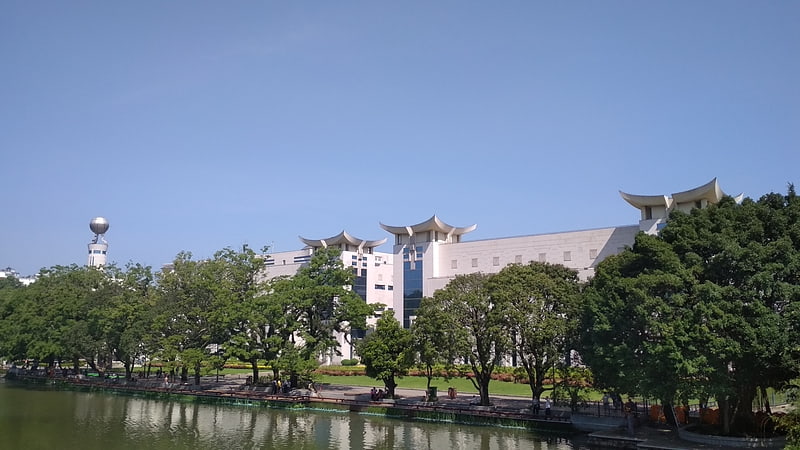
Museum in Fuzhou, China. Fujian Museum is the provincial museum of Fujian province in China established in 1933. It is located in the city capital of Fuzhou at No. 96, Hutou Jie next to the West Lake Park.
The museum was completed in October 2002, covering an area of 6 hectares and a building area of 36,000 square meters. The total investment of the museum's complex is 270 million Yuan.
As a national first-class museum, the Fujian Museum has a collection of more than 170,000 relics and natural specimens.[1]
Flower Lane Church
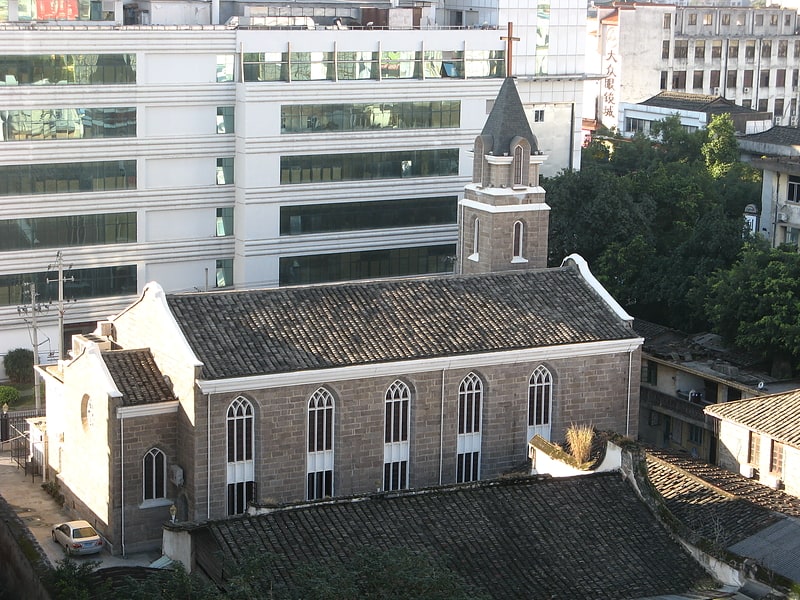
Also known as: 花巷基督教堂
Church in Fuzhou, China. Flower Lane Church is a Christian church in Fuzhou, China.[2]
Sanfang Qixiang
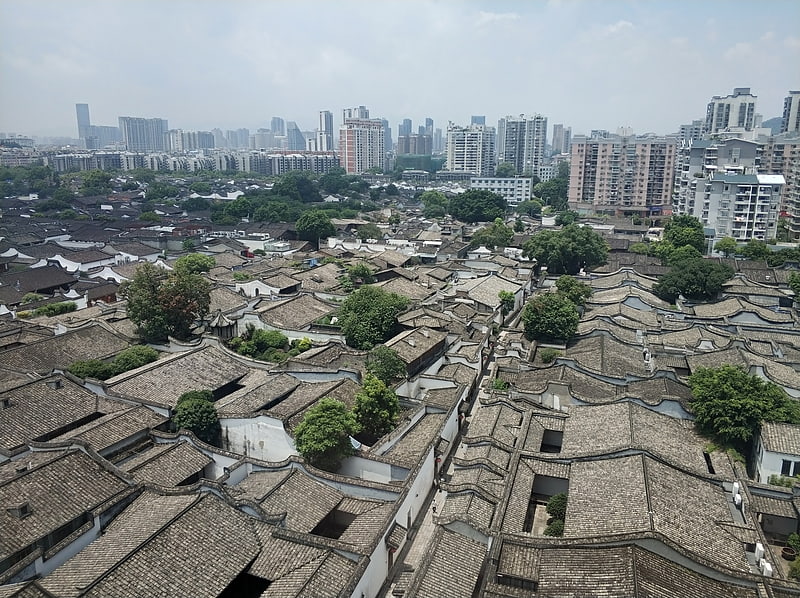
Tourist attraction in Fuzhou, China. Sanfang Qixiang, literally Three Lanes and Seven Alleys, is a historic and cultural area in the city of Fuzhou. Its name is derived from the three lanes of Yijin, Wenru, and Guanglu and the seven alleys of Yangqiao, Langguan, Ta, Huang, Anmin, Gong, Jipi. Covering a total area of 0.38 square kilometers, it is celebrated as an architectural museum of Ming and Qing Dynasty buildings, including numerous National Designated Monuments such as the historic residences of notable figures. Because of its more than 400 rich, famous and powerful residents, this area has been dubbed the 'Beverly Hills' of imperial China. Since 2015, it has been designated as a 5A-Rated Tourist Attraction by the Ministry of Culture and Tourism.
Some of its notable former residents include:
- Zhang Jing
- Lin Zexu
- Chen Baochen
- Zheng Xiaoxu
- Shen Baozhen
- Sa Zhenbing
- Yan Fu
- Lin Shu
- Bing Xin
- Lu Yin
- Lin Huiyin
- Lin Juemin
- Wang Zhu
- Shu Chun Teng
- Deng Tuo
Thanks to its status as a living fossil of traditional Chinese urban wards of li (里) and fang (坊) dating back to as early as the Tang Dynasty, it was inscribed on the UNESCO World Heritage Tentative List in 2013, and later designated a National Historic and Cultural Street by the Ministry of Housing and Urban-Rural Development and State Administration of Cultural Heritage in 2015. Owing to the extraordinary efforts to protect the historic fabrics from Sanfang Qixiang Administration, it was awarded an honorable mention of the 2015 UNESCO Asia-Pacific Heritage Awards.[3]
Fuzhou Confucian Temple
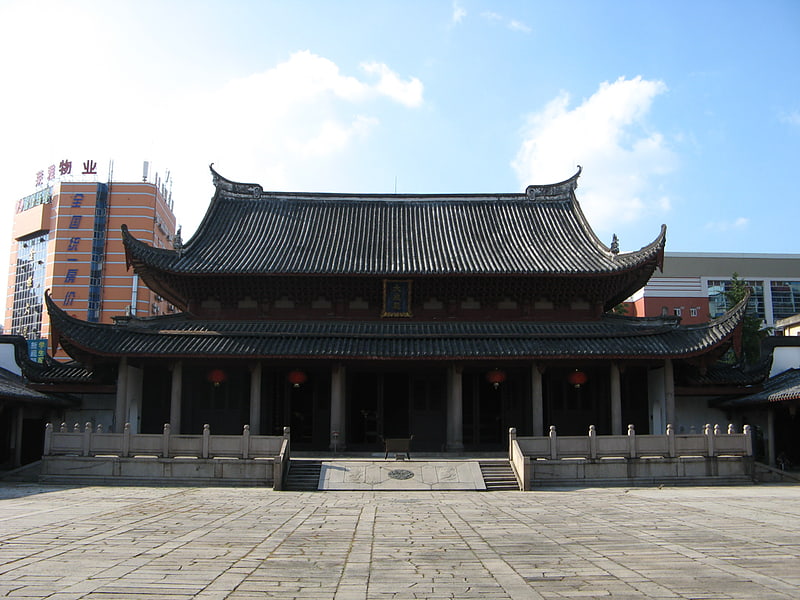
Temple in Fuzhou, China. The Fuzhou Confucian Temple, more commonly known as Xianshi Temple or Temple of Saints, is a Confucian temple located in Fuzhou, Fujian.[4]
Xichan Temple
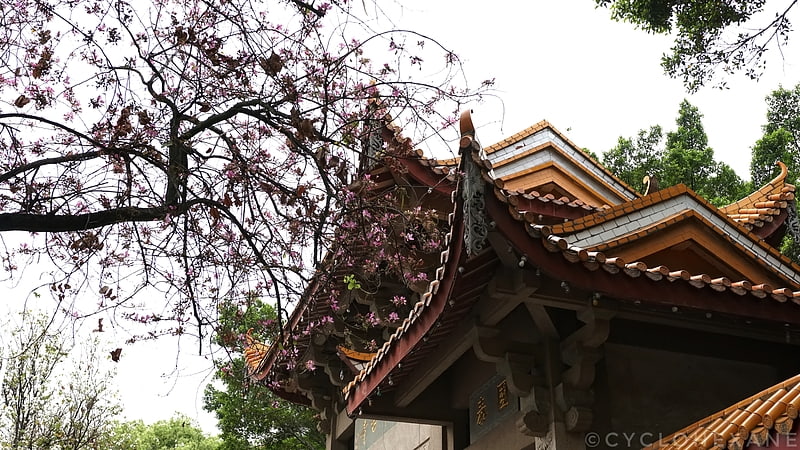
Xichan Temple is a Buddhist temple located on the slope of Mount Yi, in Gulou District, Fuzhou, Fujian.[5]
Jinshan Temple
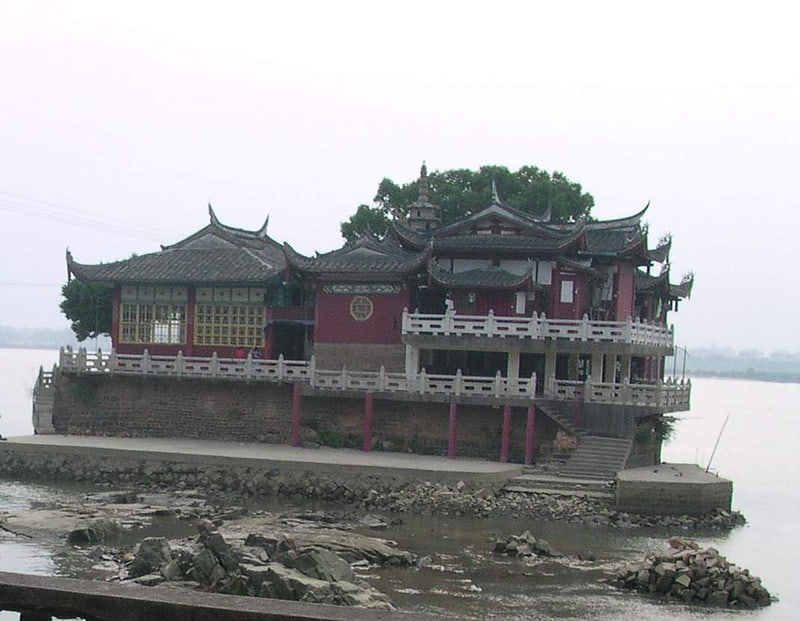
Temple in Fuzhou, China. Jinshan Temple is a Buddhist temple located on an island of Wulongjiang River, in Cangshan District of Fuzhou, Fujian, China. It is the only Buddhist temple in the river in China and the only Buddhist temple on the water in Fujian.[6]
Fuzhou Mosque
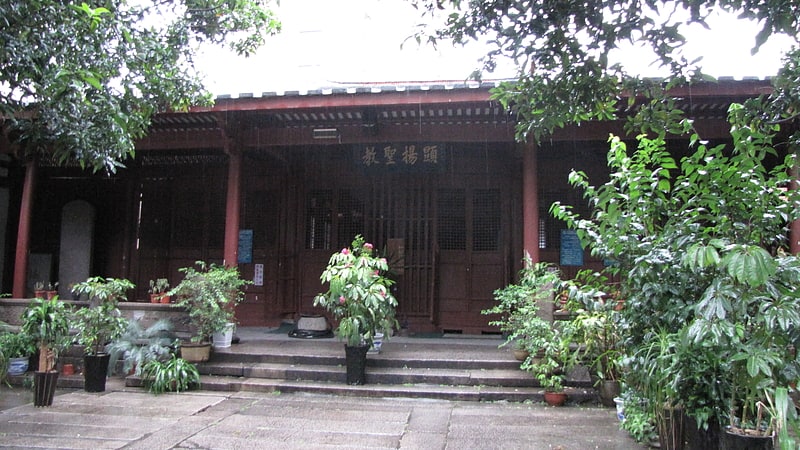
Also known as: 福州清真寺
Mosque in Fuzhou, China. The Fuzhou Mosque is a mosque in Gulou District, Fuzhou City, Fujian Province, China. It is located under the Ankang Bridge in Fuzhou and was rebuilt in the Ming Dynasty following a fire.[7]
Church of Heavenly Peace
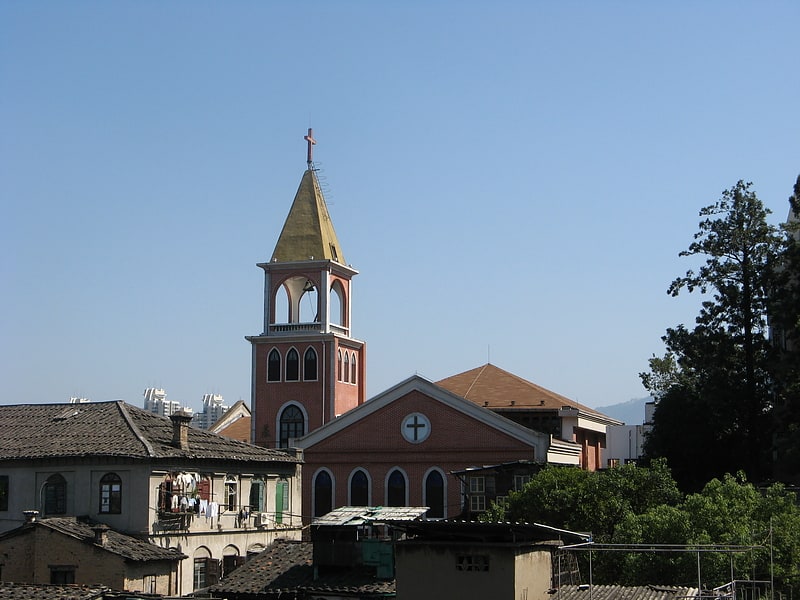
Also known as: 天安基督教堂
Church. Church of Heavenly Peace, also known as Church of Heavenly Rest or Tien Ang Tong, is a Christian church in Fuzhou, China.[8]
Saint Dominic's Cathedral
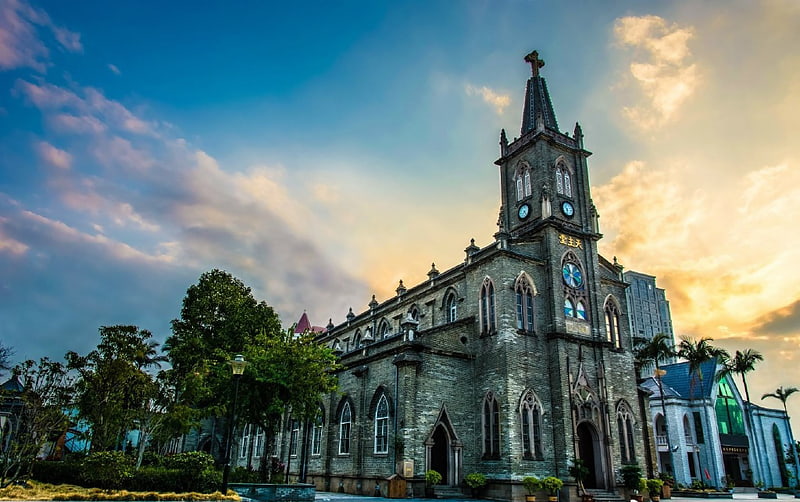
Also known as: 泛船浦圣多明我主教座堂
Church in Fuzhou, China. St. Dominic's Cathedral(in Chinese 福州圣多明我主教座堂), locally known as the Fanchuanpu Tianzhutang(Literally, Pan-ship Oura
Catholic Church) is located by the Min River, Fuzhou, Fujian, China. It is the Seat of the Metropolitan Archdiocese of Fuzhou and the Ecclesiastical Province of Fuzhou.[9]
St. John's Church

Also known as: 福州圣约翰堂
Church. St. John's Church is an abandoned Anglican church located in Lequn Street No. 9, Cangshan District, Fuzhou, China. It is also known in the Foochow vernacular as "石厝教堂". Completed in 1860, the church was donated by British people living in Fuzhou in 1858. The church is of a typical Gothic style. T. C. Walkers was the engineer who designed the building.
The site of the church was initially over 1000m2, and the footprint of the building is around 320m2.
The site of the church was nominated as "Historical Protection Site" in 1992. However, it is now occupied by a military unit as a printing factory, and is in a poor state of disrepair.[10]
Port of Fuzhou
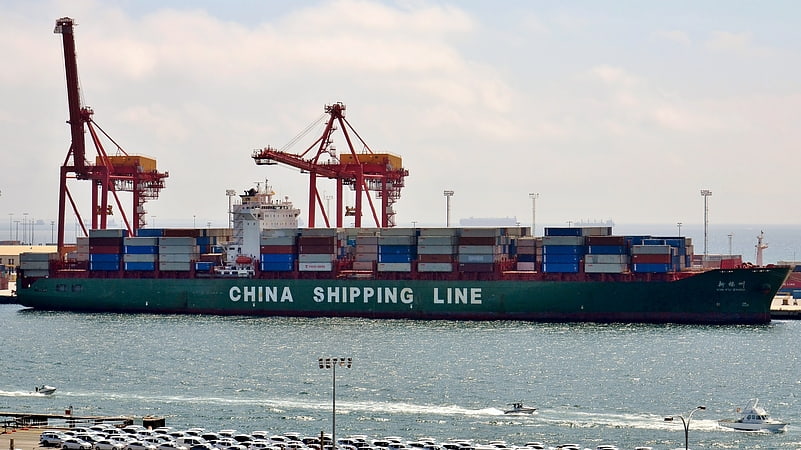
The Port of Fuzhou is a natural seaport centered on the estuary of the Minjiang River artificial deep-water international seaport on the coast of Fuzhou, Fujian, People's Republic of China. and of the neighboring prefecture of Ningde. The Port is located on the southeastern coast of Fujian, facing the Taiwan Strait. Fuzhou is the Mainland port closest to Taiwan, being just 149 Nautical miles from Keelung.
In 2013, Fuzhou port had a total cargo throughput of 127 million tonnes, an annual increase of 11.82%. Container traffic with Taiwan was 332,500 TEU, an increase of 6.09%. and the regular ferry route between Pingtan wharf and Taichung and Taipei in Taiwan had 144,400 passengers, and increase of 4.09%. The port is part of the Maritime Silk Road.[11]